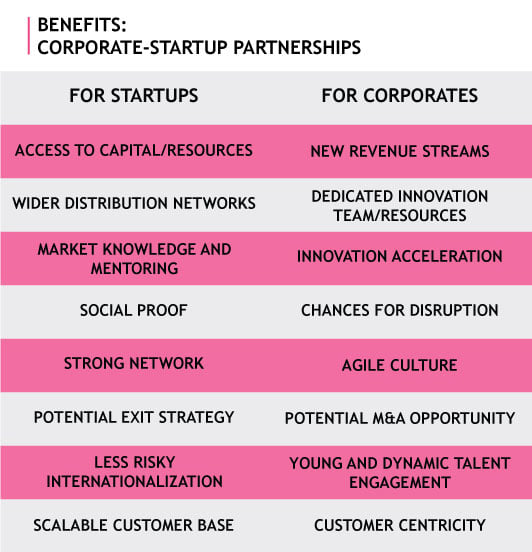Why startups need to become more corporate – StartupSmart

The startup world is filled with dreams inspired by stories of Mark Zuckerberg, Brian Chesky and the like who started with nothing – in an apartment or garage – and have built companies that changed how we behave, interact, move and even think.
They are highly valued unicorns that are changing the world.
But running these conglomerates across many countries is not always a dream.
As startups have grown from small teams, so too have the real world challenges. As Fast Company notes, startups’ lack of corporate structure is one common reason for their appeal. But while the fact that everything tends to flow a little more freely is appealing to many, few realise that it isn’t necessarily a matter of choice.
While this agility and the ability to innovate on the fly are hyped extensively, the lack of structure has a strong impact on how founders lead the company as it grows.
Harvard Business School’s Shikhar Ghosh’s analogy is that firms aren’t murdered by the market; they commit suicide because the founders can’t or won’t adapt to the organisations’ changing needs.
As the growing pains start to show, entrepreneurs need to focus on two significant things: as startups grow and scale past the first seven to 10 employees, it is time to start thinking of and implementing corporate structures and startups need to think beyond their founders.
The allure of corporate structures
Lauren Hall, the CEO of iVvy and one of EY’s five Australian ‘Winning Women’, says that it’s “important for startups to think like a big organisation even if they are small”.
“Building a successful company comes with ensuring financial models are tested and measured continuously, and that entrepreneurs are not just focused on one form of income,” Hall says.
“A founder can only exit once they have built a team that no longer requires their hands-on approach and can scale growth with business processes that are well tested.”
While the words corporate structure and organisational hierarchy are the antithesis of everything the startup world holds dear, they have the potential to make or break many. Tomasz Tunguz, a former Google employee and now a venture capitalist at Redpoint Ventures, writes about recognising the breaking points of a startup’s management structure, noting that at founding, the structure of the company is flat. Everyone is effectively a peer.
At about eight people, a leader must emerge to shepherd the growing team and so the first management layer is created. Fast growing companies need to develop these layers and structures to manage their employees and develop them best.
But will implementation of structures and processes kill the agility and innovation that are the very fabric of startups?
Laura McKenzie, CEO of Scale Investors addresses this fittingly by concluding that not all areas of the startup need to get corporatised simultaneously:
“Standardisation of sales processes is critical as it enables companies to scale more quickly. It’s less important to corporatise the product development where creativity and agile processes enable the business to respond ahead of competitors to market needs. Understanding corporate governance enables a frame in which creative activity can happen.”
The challenge on our shores is that Australian startups are behind our American counterparts when it comes to corporatising.
Emma Lo Russo, CEO of Digivizer says that it is easier said that done:
“As you grow you need more capital (human and funds) and if you grow quickly then things can get away from you very easily. Not many Australians have worked for companies that have experienced high growth (where as in the US it is so much more common). This means the learning is hard and fast here and maybe without the same global exposure. I draw on so much of that experience (finance/people/marketing/sales) as it helps my ability to stay strategic even when it feels very tactical/operational.”
Beyond the founder
Harvard Business Review highlights that even when startups have great products and customer interest, they struggle with long-term growth. Often, as research shows, the biggest obstacles are the entrepreneurs themselves.
In a scenario that many involved in the startup sector can relate to, HBR talks about how the personal charisma and technical smarts that founders use to rally small teams do not work as well as ventures scale up and become more complex; requiring more operational and commercial sophistication to manage it.
Founders may lack the skills and interest to lead those activities effectively — what they typically love is dreaming up and building products. Yet, many insist on retaining control over all aspects of their business, even those that they don’t enjoy, which gets them into trouble.
Laura’s response to this is to outsource corporate governance activities such as accounting systems, CRM, agreements on board paper requirement and others that are not the areas of expertise of a founder and often causes distraction and conflict, taking them away from strategic activities.
For Emma, it is all about building the future team:
“You have to build and assume you will need double, triple, quadruple the employee force in the near future. Build for that in terms of roles and responsibilities, and document, defining why you do things the way you do. Build a team of complimentary strengths. And if you can’t see much runway in the team you have, then you need to hire up – what got you from a to b might not get you from b to c.”
In a study of 6130 American startups, the Strategic Management Journal found that each additional level of founder control (i.e., controlling the board and/or the CEO position) reduces the pre-money valuation of the startup by 17.1–22.0%.
In her experience, Lauren has found that by building on the team’s capabilities and encouraging them to step up, founders can learn to relinquish control and build a cohesive organisation with a strong vision and mission that everyone is a part of.
While outsiders perceive the startup world to be a dream journey from the apartment or garage to boardrooms, filled with open plans and innovative disruption, the reality is a lot of day-to-day people, cash flow, product and growth challenges.
Culture takes time to build. Sustained profitability requires precision planning and collaborative management.
While agility is great, the startups that exit successfully follow a more corporate structure. Startups need to think big so they lay the correct foundation for future growth and keep up with the corporate governance of a global company.
Not many original founders can have this ability to think big. Those that do will grow and most likely create highly acquirable companies.
Follow StartupSmart on Facebook, Twitter, LinkedIn and Soundcloud.

